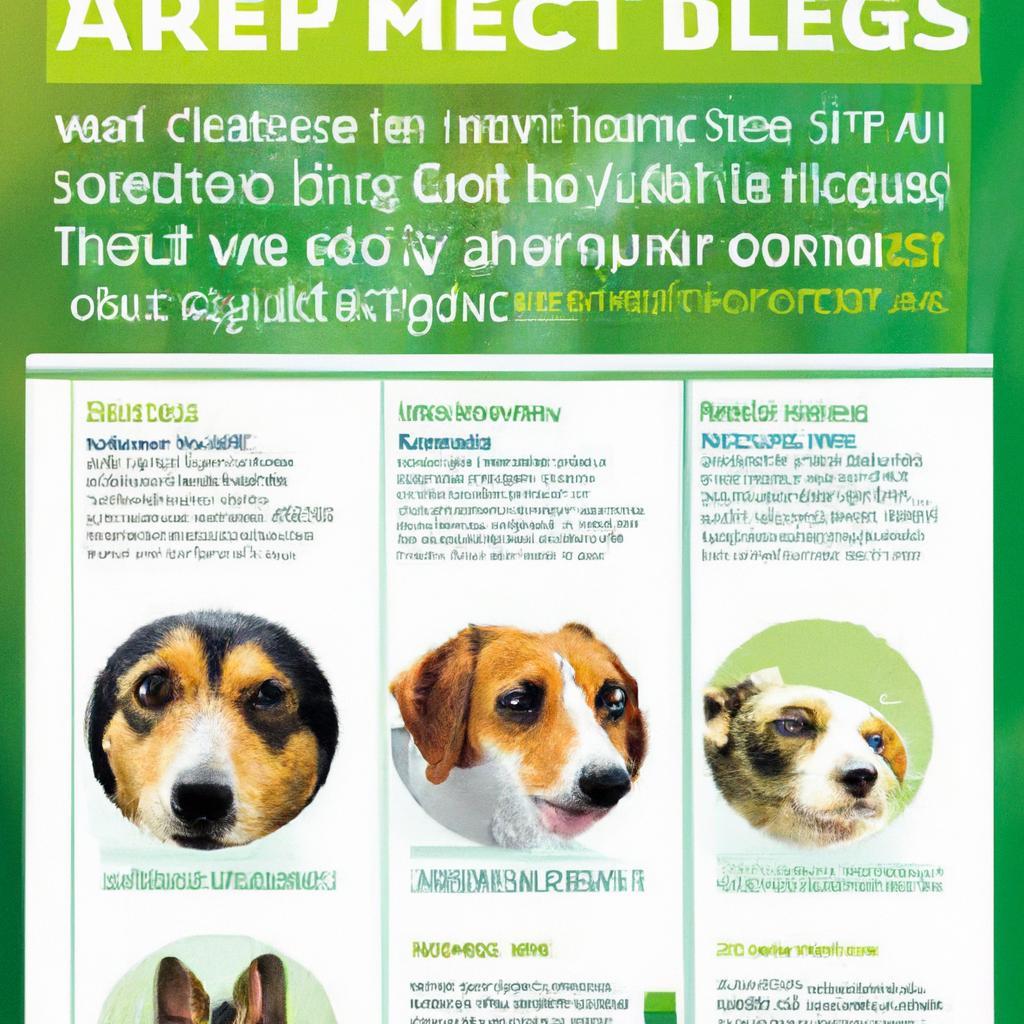Imagine bringing home a furry friend, only to discover that your allergies flare up every time they wag their tail. To avoid this, knowing how to identify a hypoallergenic dog is crucial. Look for breeds known for producing less dander, such as Poodles or Bichon Frises. Observe their coat—curly or wiry fur often traps allergens better than straight hair. Spend time with the dog before committing; if your allergies remain calm, you may have found your perfect match. Choose wisely, and enjoy a sneeze-free companionship!
Contents
- Understanding Hypoallergenic Dogs and Their Characteristics
- Identifying Common Allergens and Their Impact on Dog Owners
- Evaluating Breeds Known for Hypoallergenic Traits
- Practical Tips for Reducing Allergens in Your Home with a Dog
- Q&A
Understanding Hypoallergenic Dogs and Their Characteristics
When considering a dog that is less likely to trigger allergies, it’s essential to understand the characteristics that define hypoallergenic breeds. These dogs typically produce fewer allergens than their counterparts, making them a more suitable choice for allergy sufferers. The key lies in their coat type and grooming needs, which can significantly influence the amount of dander and saliva they release into the environment.
**Coat Type**: Hypoallergenic dogs often have hair instead of fur, which means their hair grows continuously and requires regular grooming. This characteristic helps to minimize shedding and dander. Breeds like the Poodle and Bichon Frise are excellent examples, as their curly coats trap dander and hair, preventing it from spreading throughout your home. Additionally, these breeds tend to have less oil on their skin, which can further reduce allergen production.
**Grooming Habits**: Regular grooming is crucial for maintaining the hypoallergenic qualities of these dogs. Frequent brushing and bathing can help remove loose hair and dander, keeping your living space cleaner and more comfortable. Owners should be prepared to invest time in grooming routines, as this not only benefits the dog’s health but also minimizes allergens in the home environment.
**Behavioral Traits**: Hypoallergenic breeds often exhibit friendly and sociable behaviors, making them great companions for families and individuals alike. Their temperament can play a role in how they interact with people, including those with allergies. Many hypoallergenic breeds are known for their intelligence and trainability, which can make them easier to manage and integrate into your lifestyle. Choosing a dog with the right characteristics can lead to a harmonious relationship, even for those with sensitivities.
Identifying Common Allergens and Their Impact on Dog Owners
When considering a hypoallergenic dog, it’s essential to understand the common allergens that can affect both dogs and their owners. Many people are unaware that allergens can come from various sources, including pet dander, saliva, urine, and even the environment. Identifying these allergens is crucial for dog owners who suffer from allergies, as it can significantly impact their quality of life and their ability to enjoy companionship with their furry friends.
Some of the most prevalent allergens associated with dogs include:
- Dog Dander: Tiny flakes of skin that can trigger allergic reactions.
- Saliva: Proteins found in dog saliva can become airborne and cause allergies when they dry and flake off.
- Urine: This can also contain allergens that may linger in the environment.
- Environmental Factors: Pollen, dust mites, and mold can exacerbate allergic reactions, especially in homes with pets.
Understanding the impact of these allergens is vital for dog owners. Allergic reactions can manifest in various ways, including sneezing, itching, and respiratory issues. For those who are sensitive, even a small amount of dander or saliva can lead to discomfort. This is why choosing a dog breed that produces fewer allergens can be a game-changer for individuals and families struggling with allergies.
Moreover, it’s important to note that no dog is entirely hypoallergenic; however, some breeds are known to produce fewer allergens than others. Breeds such as Poodles, Bichon Frises, and Maltese are often recommended for allergy sufferers due to their lower shedding and dander production. By being informed about common allergens and their effects, dog owners can make educated decisions that enhance their living environment and promote a healthier relationship with their pets.
Evaluating Breeds Known for Hypoallergenic Traits
When considering a dog that may be suitable for allergy sufferers, it’s essential to evaluate breeds that are often labeled as hypoallergenic. These breeds typically produce fewer allergens than others, making them a more viable option for individuals with sensitivities. However, it’s important to note that no dog is completely free of allergens, and individual reactions can vary significantly. Therefore, understanding the characteristics of these breeds can help you make an informed decision.
Some breeds are known for their low-shedding coats, which can significantly reduce the spread of dander and hair in your home. Breeds such as the **Poodle**, **Bichon Frise**, and **Portuguese Water Dog** are often recommended for allergy sufferers due to their curly or wavy fur that traps dander and hair. Additionally, these breeds require regular grooming, which not only keeps their coats healthy but also minimizes the allergens released into the environment.
Another factor to consider is the dog’s skin type. Breeds with less oil on their skin tend to produce fewer allergens. For instance, the **Schnauzer** and **Maltese** are known for their less oily skin, which can contribute to a lower allergen load. Furthermore, these breeds often have a unique coat texture that helps contain dander, making them a popular choice for those with allergies.
Lastly, it’s crucial to spend time with a breed before making a commitment. Visiting breeders or shelters and interacting with the dogs can provide insight into how your allergies may react. Remember to consider factors such as the dog’s grooming needs, activity level, and temperament, as these elements will also play a significant role in your overall experience. By carefully evaluating these hypoallergenic breeds, you can find a furry companion that fits your lifestyle while minimizing allergy concerns.
Practical Tips for Reducing Allergens in Your Home with a Dog
Living with a dog can bring immense joy, but for allergy sufferers, it can also pose challenges. To create a more comfortable environment, consider implementing these practical strategies to minimize allergens in your home. Start by establishing a **designated pet-free zone**, such as the bedroom, where your dog is not allowed. This can provide a safe haven for those sensitive to allergens, allowing for restful sleep without the risk of exposure.
Regular grooming is essential in managing allergens. **Brush your dog frequently**, ideally outdoors, to reduce the amount of dander and loose hair that can accumulate in your home. Additionally, consider using a **high-quality pet shampoo** designed to reduce allergens. Bathing your dog every few weeks can help keep their coat clean and minimize the spread of allergens throughout your living space.
Investing in **air purification systems** can significantly improve indoor air quality. Look for HEPA filters that are specifically designed to capture pet dander and other allergens. Additionally, ensure that your home is well-ventilated by regularly opening windows and using exhaust fans to help circulate fresh air. This can help dilute allergens and create a healthier environment for both you and your furry friend.
maintaining a **clean home is crucial** in reducing allergens. Vacuum regularly with a vacuum cleaner equipped with a HEPA filter to trap pet hair and dander effectively. Wash your dog’s bedding, toys, and any fabric they frequently come into contact with on a regular basis. By keeping your living space tidy and free of allergens, you can enjoy the companionship of your dog while minimizing allergy symptoms.
Q&A
-
What does hypoallergenic mean in relation to dogs?
Hypoallergenic dogs are breeds that are less likely to trigger allergic reactions in sensitive individuals. This is often due to lower levels of shedding and dander production, making them more suitable for allergy sufferers.
-
How can I identify a hypoallergenic dog breed?
To identify hypoallergenic breeds, look for those known for minimal shedding and dander, such as Poodles, Bichon Frises, and Maltese. Research breed characteristics and consult with breeders or shelters about their allergy-friendly qualities.
-
Are all dogs of a hypoallergenic breed guaranteed to be hypoallergenic?
No, not all dogs from hypoallergenic breeds will be completely hypoallergenic. Individual dogs may still produce varying levels of allergens. It’s essential to spend time with a dog before bringing it home to see how your allergies react.
-
What steps can I take to reduce allergens in my home with a dog?
To minimize allergens, consider the following:
- Regular grooming: Bathe and brush your dog frequently to reduce dander.
- Clean your home: Vacuum and dust regularly to remove pet hair and dander.
- Air filtration: Use HEPA filters in your home to trap allergens.
- Designated pet areas: Keep your dog out of certain rooms, especially bedrooms, to limit exposure.
understanding hypoallergenic dogs is essential for allergy sufferers seeking companionship. By recognizing the signs and researching breeds, you can find the perfect furry friend that fits your lifestyle and minimizes allergic reactions. Choose wisely for a harmonious home!

大家好,我是彼得潘,專業的手法身體治療師。我喜歡探索和研究各種主題,並透過與人工智慧的合作分享專業、實用、有趣的文章。我們定期進行人工審核,以確保內容的準確性。如果您發現文章中有任何不準確的地方,請隨時與我們聯繫,我們會及時糾正。您可以透過 [email protected] 與我們聯繫。



